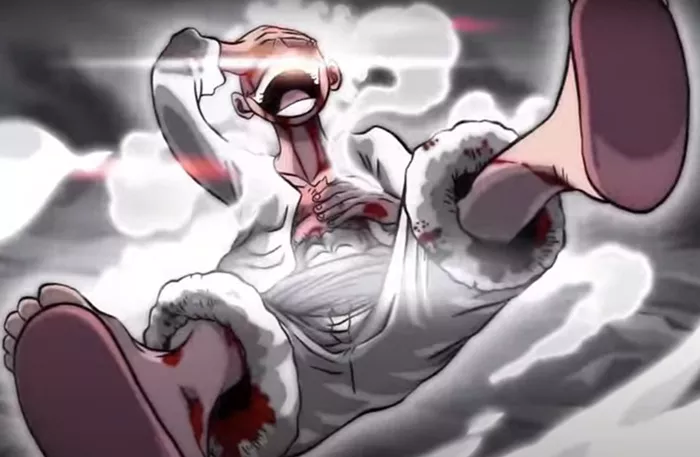In the expansive universe of One Piece, created by Eiichiro Oda, the character of Sun God Nika emerges as a pivotal figure steeped in myth and legend. Nika is not merely a character; he embodies themes of liberation, joy, and the fight against oppression. His narrative intertwines with significant events and characters within the series, enriching the lore and providing deeper insights into the world of One Piece.
The Origins of Sun God Nika
Nika’s origins are shrouded in mystery, drawing inspiration from various mythological sources. He is often referred to as a “Warrior of Liberation,” a benevolent figure who frees slaves and brings joy to those who believe in him. The concept of Nika was first introduced through the character Who’s-Who, a member of the Beasts Pirates, during his confrontation with Jinbe. Who’s-Who recounts tales he learned while imprisoned in Impel Down, where he discovered the legend of Nika after losing the Devil Fruit named after him.
The lore surrounding Nika suggests that he is a figure revered by many oppressed peoples within the One Piece world. Slaves would pray to him for salvation, reinforcing his image as a harbinger of freedom and hope. This portrayal emphasizes his role as a symbol of resistance against tyranny and injustice.
Nika’s Connection to Joy Boy
A significant aspect of Nika’s story is his connection to Joy Boy, another legendary figure from the One Piece lore. Joy Boy is known for his role during the Void Century, a time shrouded in secrecy and crucial to understanding the overarching narrative of One Piece. The relationship between Nika and Joy Boy remains ambiguous; some theories suggest that they may be different incarnations or manifestations of similar ideals.
The legend of Joy Boy includes an apology inscribed on a Poneglyph found on Fish-Man Island, indicating a promise unfulfilled regarding the Noah, a massive ship intended to save the Fish-Men. This connection hints at deeper themes of destiny and responsibility that resonate throughout the series.
The Mythical Zoan Devil Fruit
At the heart of Nika’s powers lies the Hito Hito no Mi, Model: Nika, a Mythical Zoan Devil Fruit that grants its user extraordinary abilities. This fruit allows its wielder to embody aspects of Nika himself, showcasing powers that align with freedom and joy. Monkey D. Luffy, the series’ protagonist, becomes intertwined with this fruit as he awakens its powers during critical moments in his journey.
Luffy’s transformation into Nika during pivotal battles reinforces his role as a liberator and hero within the narrative. His abilities reflect not only physical prowess but also an innate capacity to inspire those around him. This transformation serves as a narrative device that highlights themes of friendship, resilience, and hope.
Cultural Significance Within One Piece
The character of Sun God Nika resonates deeply within various cultures depicted in One Piece. His imagery appears across different races and civilizations, suggesting that he is more than just a singular figure; he represents a collective yearning for freedom among oppressed peoples. For instance, members of the Shandia tribe have been depicted praying to solar deities, emphasizing the importance of sun gods in their cultural heritage.
Furthermore, elements such as symbols associated with Nika can be found throughout different arcs in One Piece, including Elbaf and Alabasta. These recurring motifs reinforce his significance across diverse narratives within the series.
The Role of Faith and Belief
A central theme surrounding Sun God Nika is faith—both in him as a figure and in the ideals he represents. Characters like Bonney demonstrate how belief can manifest powerfully within individuals. Bonney’s recent encounters with Luffy reveal her own understanding of Nika’s legacy; she begins to grasp her potential by imagining herself embodying his essence.
This notion extends beyond mere physical transformation; it encapsulates the idea that belief can lead to liberation from one’s limitations. The power dynamics shift when characters embrace their faith in Nika, showcasing how collective belief can spur change in their reality.
Nika’s Design and Symbolism
Nika’s design has drawn comparisons to various mythological figures across cultures. He is often depicted with elongated limbs and an expressive face that conveys joy—a stark contrast to many other characters who embody darkness or despair. This visual representation aligns with his role as a liberator and symbol of happiness.
The design choices made by Oda reflect broader themes within One Piece, where characters often represent larger ideals or concepts. By presenting Nika in such an exaggerated manner, Oda emphasizes his otherworldly nature while simultaneously grounding him in relatable human emotions.
Nika’s Influence on Other Characters
The impact of Sun God Nika extends beyond his own narrative; it influences numerous characters throughout One Piece. Figures like Fisher Tiger and other revolutionary leaders draw inspiration from Nika’s legacy as they fight against systemic oppression. His story serves as a rallying point for those seeking justice and liberation.
Moreover, Luffy’s journey embodies many qualities associated with Nika—his unyielding spirit, desire for freedom, and ability to inspire others resonate deeply with fans. As Luffy continues to grow stronger and embrace his identity tied to Nika, he becomes not just an individual hero but also a beacon of hope for countless others.
Conclusion
Sun God Nika represents more than just a character within One Piece; he embodies essential themes that resonate throughout human history—freedom, joy, and resistance against oppression. His influence permeates various cultures depicted in the series while serving as an inspiration for characters striving for liberation.As fans continue to explore this rich narrative tapestry woven by Eiichiro Oda, it becomes evident that Sun God Nika will remain an integral part of One Piece’s legacy—a symbol of hope for generations both within the story and among its audience alike.
Related Topics
How Many Breathing Styles Are There In Demon Slayer?
Does Tanjiro Have A Demon Slayer Mark?
Does Senjuro Become A Demon Slayer?


